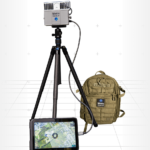
Delivery of an advanced biometrics system being developed for the Department of Homeland Security is progressing but the schedule target for the first increment has already slipped at least six months as the agency overseeing the Homeland Advanced Recognition Technology (HART) program is bringing forward some key features earlier than expected, which is sacrificing schedule for upfront capability. The first increment of HART will be delivered in spring 2020, Kenneth Gantt, deputy director of the Office of Biometric Identity Management…

 By
By 











